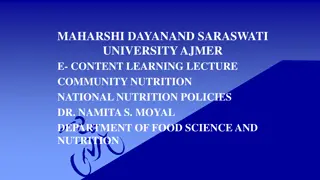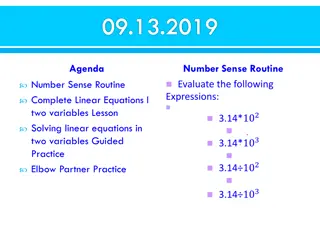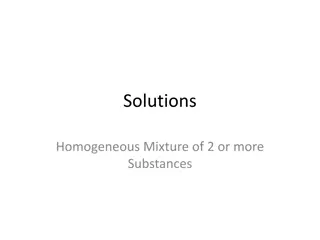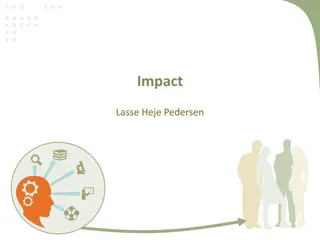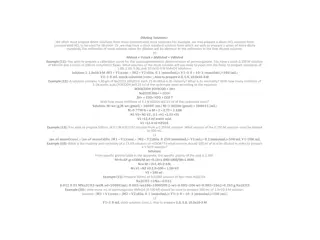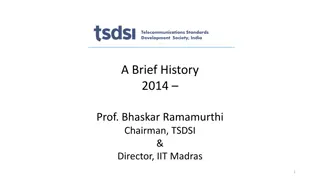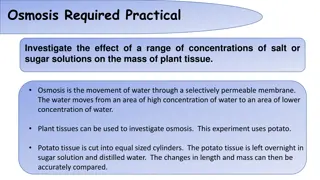Understanding Underweight: Impact, Challenges, and Solutions
An overview of underweight, especially prevalent in rural India, its implications on health, productivity, and pregnancy, as well as initiatives like the POSHAN Abhiyaan to combat malnutrition. The limitations of being underweight are discussed, such as reduced oxygen consumption, decreased work capacity, and higher mortality risks. Signs and symptoms of underweight include hair thinning, hormonal irregularities, heart issues, and more.
Download Presentation

Please find below an Image/Link to download the presentation.
The content on the website is provided AS IS for your information and personal use only. It may not be sold, licensed, or shared on other websites without obtaining consent from the author. Download presentation by click this link. If you encounter any issues during the download, it is possible that the publisher has removed the file from their server.
E N D
Presentation Transcript
CSJM UNIVERSITY, KANPUR SCHOOL OF HEALTH SCIENCES Topic UNDERWEIGHT By-Dr Aamena Zaidi Assistant Professor
UNDERWEIGHT Introduction An underweight person is a person whose body weight is considered too low to be healthy.Half the Indian rural population is underweight with up to three- quarters in deprived communities. A very large proportion of rural Indian households have inadequate food supplies Chronic energy deficiency is due to chronic food deficiency. The report considered the most authoritative global study tracking progress towards ending hunger and malnutrition said that the number of undernourished people in India declined from 249.4 million in 2004-06 to 189.2 million in 2017-19.14-Jul-2020.
India launched the POSHAN Abhiyaan, a flagship national nutrition mission to improve nutrition among children, pregnant women and lactating mothers in 2017. With the aim of meeting the second United Nations-mandated Sustainable Development Goal (SDG): Ending hunger, achieving food security and improved nutrition. To this end, POSHAN Abhiyaan aims to reduce malnutrition among children by facilitating inter-departmental convergence, real-time monitoring, intensified health and nutrition services for the first 1,000 days and Jan Andolan (community Mobilisation).
LIMITATIONS OF UNDERWEIGHT Adults with BMI 18.5 have reduced VO2 max(VO max is the maximum rate of oxygen consumption measured during incremental exercise; that is, exercise of increasing intensity. The name is derived from three abbreviations: "V " for volume, "O " for oxygen, and "max" for maximum.) reduced capacity for sustained work and a lower productivity. Underweight pregnant women have increased risk of getting underweight baby . Progressively greater proportions of time are spent off work or m bed ill whenlevels are below 17 in men and women. There is a progressive curvilinear increase in mortality in group of men with BMIs rang from 18.5 to below 16.0. Immunological deficits are seen particularly in men with low BMls micronutrient deficiencies are present. Undernourished children have lower heights and weights. The age of menarche is delayed in undernourished girls by about 1-2 years.
SIGNS AND SYMPTOMS OF UNDERWEIGHT Thinning and dryness of hair Light-headedness Pituitary hormone abnormalities Lowered amplitude of tracing on ECG Reduced heart size (loss of fat around heart) Lanugo'-fine, raised white hair on body surface Slowed heart rate Absence of menstrual periods(amenorrhea) Mild anaemia Brittle nails Constipation Loss of subcutaneous fat Diminished muscle Slower reflexes Mildly altered thyroid function. Edema Cold sensitivity lowered body temperature Dry skin
ETIOLOGY Some of the causes of underweight are: Starvation occurs either due to famine conditions or an inadequate diet in proteins or an attempt at reducing weight. During starvation fatty tissue is lost and the skeletal, heart muscles and small intestine are atrophied losing its absorptive function. This results in low blood pressure, marked emaciation, loss of hair and inelastic skin. Since the feeding programme should be gradual, initially glucose water, fruit juice and skimmed milkpowder may be given. Underweight also results from debilitating diseases like tuberculosis, diabetes, malabsorption syndrome or cancer. Infections are common among them. In these cases tonics are not useful as they only help to improve the appetite but they do not increase weight. It is wise and necessary to spend money on nourishing high calorie foods.
Psychological factors may contribute to eating very little food (anorexia nervosa). Some mental patients reject food leading to severe weight loss. Anorexia nervosa is seen in girls between the age of 15 and 25 years. Usually it arises from a desire to lose weight. If untreated this condition may prove fatal due to progressive starvation. Electrolytes are lost in vomiting at the sight of food, or during eating Transient stoppage of menstruation may occur which becomes normal with dietary treatment. In such cases, patients must be admitted to a hospital and should be given specific directions to have high caloric intake of bread, wheat and milk products. Underweight occurs in people who are active, tense, nervous and who never take rest. When it reaches a severe state, psychological efficiency as a whole is reduced and their power for concentration, decision making and withstanding calamities are very poor Working efficiency is poor and the productivity is less. He cannot work continuously for a long period. It occurs in pathological conditions such as fevers, gastrointestinal disturbances, where the digestion and absorption capacities are decreased and in hyperthyroidism.
NUTRITIONAL AND FOOD REQUIREMENTS A high calorie, high protein, high fat dict with liberal vitamin intake is recommended But before going into the diet the first step is to determineThen a balanced diet should be planned based on theand eliminate the cause for requirements Energy - The calorie requirements vary depending upon the activities For increasing weight the total caloric intake should be in excess of the energy requirement. An additional 500 kcals per day is recommended The increase should be gradual over one of two weeks otherwise digestive disturbances may occur. Proteins - Instead of 1 g of protein, over 1.2 g per kg is recommended for tissue building. Goodquality protein is completely utilised by the body and as far as possible best protein sourcesmust be liberally included at the initial stage.
Fats - Even though fat content is increased, easily digestible fats are to be included. Fried andfatty foods are not recommended as they may cause diarrhoea. Fatty food should not be takenat the beginning of a meal as they reduce appetite High calorie fatty foods such as cream,butter, margarine and oils help to increase the weight. Carbohydrates - High carbohydrate sources must form the basis of the diet. Leafy vegetables should be restricted and preference to be given to potato and yam Dried fruits, sweets, nuts, desserts, jam, jelly, cereals, cereal products and nonvegetarian foods are rich sources of energy and can be liberally included in the diet. The number of meals should be increased. Two feeds incorporating soups, juices or sweets in between major meals improve the nutritive value of the diet Easily digestible foods should be given. Porridge, cutlets, desserts, potato chips, bigh protein drinks like milk, malted milk, and badam kheer can be included. Thick soups are easily digestible and highly nutritious item.
Vitamins and minerals - With a liberal diet there is no need for extra vitamin and mineral supplement Fluids - Fluids should not be taken before or with a meal but only after a meal so that food intake is not reduced. Enough fluids must be taken so as to avoid constipation.
DIETARY GUIDELINES Energy dense foods hold key to weight gain. Underweight person has to be on positive energy balance. Calorie intake should be more than the energy expended. Underweight person should have regular meals. He should make meals a priority and take the time to plan, prepare and eat each meal. They should at least eat three major meals a day and snacks in between. Underweight person should learn to eat more food at each meal. Serving size can be increased, for example, drinking milk from a larger glass. Dietary supplements can be given. Food should be appetising. Diet can be varied and new foods and recipes can be tried. Eating can be made in different locations and ambience and with friends and family members A walk before taking meals can make an individual more hungry.
EXERCISE AND BOWELS Regular outdoor exercise helps to stimulate appetite. Exercise with high kilocalorie intake ensure that lean body mass is built up and not just fat. Emotional well-being is essential to have a good appetite. Constipation may reduce the appetite the bowel movements should be regulated with adequate fluids, exercise and fruits. Synthetic drinks, soft drinks, alcohol aerated drinks, too much of tea and coffee reduce appetite and should be avoided.


